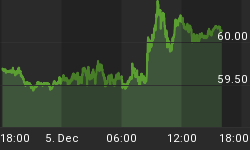Recent statements by Federal Reserve officials would lead just about anyone to believe that one of the bank's central missions has always been to guard against the lurking threat of deflation. They warn that since official inflation has remained below the Fed's 2 percent target for almost two years, the country is liable to fall into a stagnant morass unless the Fed acts boldly to hit its target. It may surprise many that this view is strictly a 21st-century development. The fear (some would say paranoia) regarding sub-2 percent inflation was nowhere in evidence in the past, even when inflation was lower than it is today.
The average headline inflation index (which includes food and energy) in the United States has increased about 1.5 percent since 2013 (this is tabulated based on the many changes in the Consumer Price Index over the past 20 years that have tended to produce lower inflation statistics). In the 70 years since the end of World War II, there was only one similar period, the seven-year stretch from 1959 to 1965 when headline inflation averaged a skimpy 1.26 percent. Contemporary economists would surely assume that during that time the Fed would have broken out the big guns to push inflation back up over 2 percent. In fact, the opposite was true.
For the rest of the article please visit the Washington Times website.
Best Selling author Peter Schiff is the CEO and Chief Global Strategist of Euro Pacific Capital. His podcasts are available on The Peter Schiff Channel on Youtube
Catch Peter's latest thoughts on the U.S. and International markets in the Euro Pacific Capital Fall 2014 Global Investor Newsletter!
















